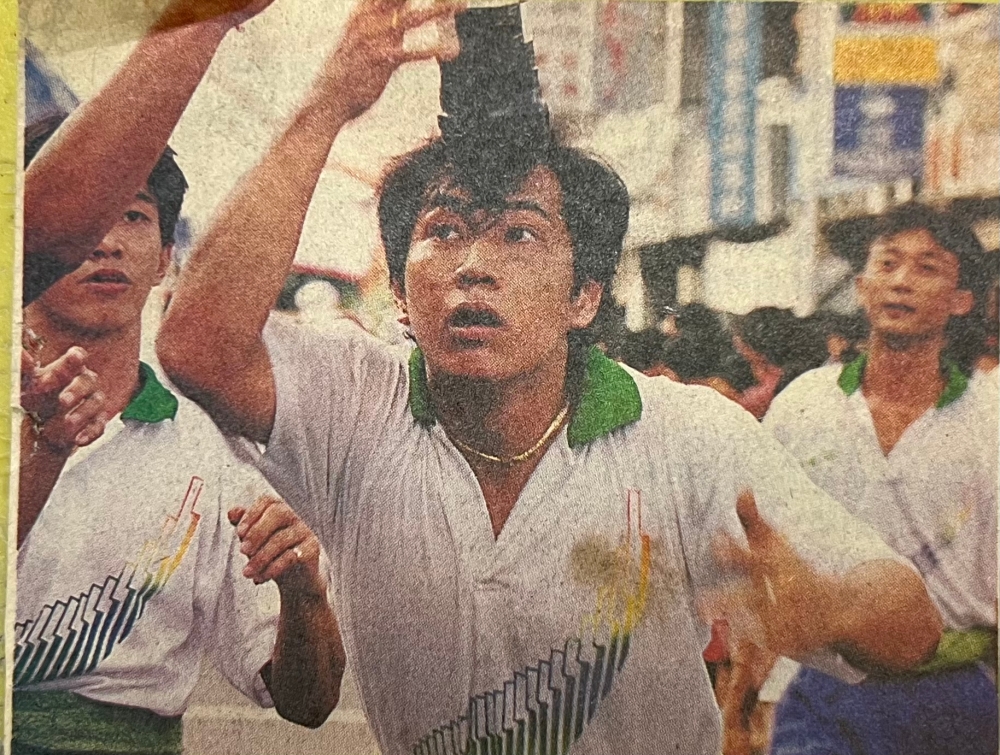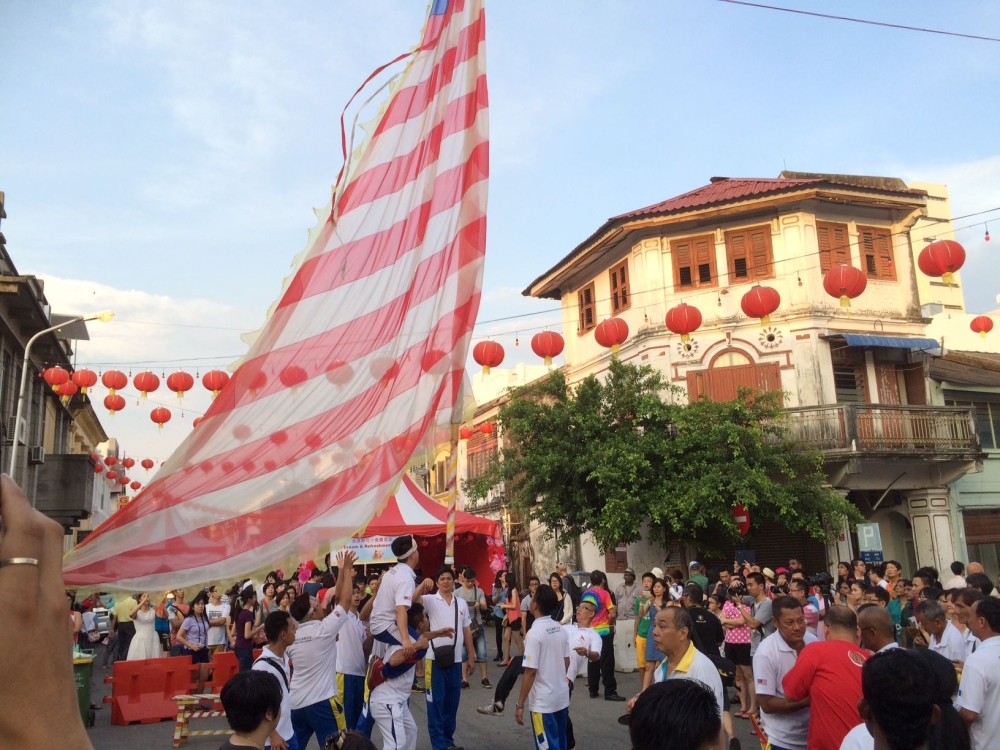GEORGE TOWN, April 6 — The Chingay Parade in Penang used to draw thousands of people, all crammed by the roadsides, craning their necks as they watch the acrobatic feats of the Chingay performers easily balancing and throwing 10-metre-high flags to each other.
The Penang Chingay Parade that meandered through the streets of George Town, starting from Padang Brown in Datuk Keramat and ending at the Esplanade, was often a main draw among locals and visitors as it does not only feature the acrobatic performances with the giant flags, but also other performances such as performers on stilts and unicycles, lion dances, dragon dances, silamban, silat and boria.
However, in recent years, interest in the parade has waned, leaving mostly visitors and very few local spectators. With this decline, sponsorship for the Chingay performers has also dwindled.
Persatuan Chingay Malaysia Utara chairman Kayden Ang said private companies, temples and organisations used to sponsor the event, with their logos and names sewn onto the giant flags.
“Now, it is hard to get sponsors because very few people are interested in Chingay,” he said.
The costs of making the giant flags, made of long bamboo poles and chiffon cloth, could reach hundreds of ringgit just for the poles, as they had to source straight bamboo poles of a specific length and width.
“Even the cloth is expensive as we use chiffon because it is lighter; it could cost a few thousand,” he said.
People watch the Chingay performance at the Chew Jetty in Penang February 23, 2018. The costs of making the giant flags, made of long bamboo poles and chiffon cloth, could reach hundreds of ringgit just for the poles, as they had to source straight bamboo poles of a specific length and width. — Picture by Sayuti Zainudin
In recent years, he said the association’s expenses are funded by their members and a few private companies.
“We do what we can because of our passion for the sport,” he said.
Aside from costs, he said most of the active members are blue-collar workers who cannot take time off work for training. While there are young members, not many remain active for long.
The association has about 300 members, but there are only 80 active members who can perform.
Out of that, only about 40 are able to perform acrobatics with the giant flags and very few of them are young.
“Many of the acrobatic performers are above their 40s and very few are younger than 30,” he said.
He said the association has young members who are eight or nine years old, but they would only learn to balance smaller flags and after a while, they would stop entirely.
“This is why we feel that this joint nomination to Unesco for Chingay is important,” he said, referring to the bid for Chingay to be included in the Unesco Representative List of the Intangible Cultural Heritage of Humanity.
He said it could drum up more interest among the locals and maybe lead to more children interested in taking up the sport.

Chingay coach Lee Kok Keong balancing a flag in the early 2000s. — Picture courtesy of Lee Kok Keong
According to Chingay coach Lee Kok Keong, only those with interest and passion for the sport would be able to master the acrobatic component of it.
“Training is tough and it often comes with injuries, even broken teeth, when learning to catch the bamboo poles with their mouth,” he said.
He said one of the best ways to create awareness and interest is to introduce the sport in schools.
“It is a good sport to train balance, strength and agility,” Lee said.
Meanwhile, Penang Chingay Association secretary Andrew Lai echoed Ang’s concern that there are fewer children interested in learning Chingay.
“Parents are more protective of their children so they have safety concerns, and other than that, they do not see the benefits of their children learning Chingay,” he said.
Lai said wushu and lion dance are more popular than Chingay because they are recognised sports with numerous competitions.

The Chingay procession marches past the grandstand for the 2024 National Day Parade in Putrajaya, on August 31, 2024. — Bernama pic
“So, we hope that with this Unesco nomination, it will boost Chingay as a cultural activity and create more interest in the sport,” he said.
He said among the proposals submitted for the nomination was to standardise and set the rules of Chingay competitions as currently, there were no set rules or marking system used.
“This will set a standard for Chingay and with this, more competitions can be held and with competitions, more people will want to join and learn it,” he said.
Ang also said there is a need for standardised competition rules for Chingay to prevent unfair judging and, at the same time, create an international-level sport that other countries can participate in.
“Once we get the Unesco listing, I believe it will bring about more economic benefits to Penang while at the same time, shine a light on Chingay,” Lai said.
Chingay associations from Penang and Johor Baru are working with Singapore on a joint Unesco nomination.
Lai said they have attended workshops and meetings with Johor Baru and Singapore to discuss the joint nomination, including selecting the videos and photos to submit to Unesco.
When contacted, George Town World Heritage Incorporated General Manager Ang Ming Chee said Chingay processions in Penang, Johor Baru and Singapore have different elements but there is one common feature, the processions are the people’s parade.

A Chingay performance at the Chinese New Year celebration in Penang February 28, 2015. — Picture by K.E. Ooi
“In Penang, it has evolved to become a multicultural procession that included performances such as silamban, silat and boria while in Johor, it is a celebration of the five deities that showcased the strong commitment of volunteerism among the local communities,” she said.
In comparison, Singapore’s Chingay extravaganza is one that is almost carnival-like with international elements included in it.
“Chingay in each place celebrates the local identity and it also brings people of all walks of life together in one celebration,” she said.
She said it is a cultural event that has evolved to celebrate diversity and promotes inter-ethnic relationships within the community.
Malaysia and Singapore will submit a joint nomination for Chingay to be included in Unesco’s intangible cultural heritage list by the end of March.







